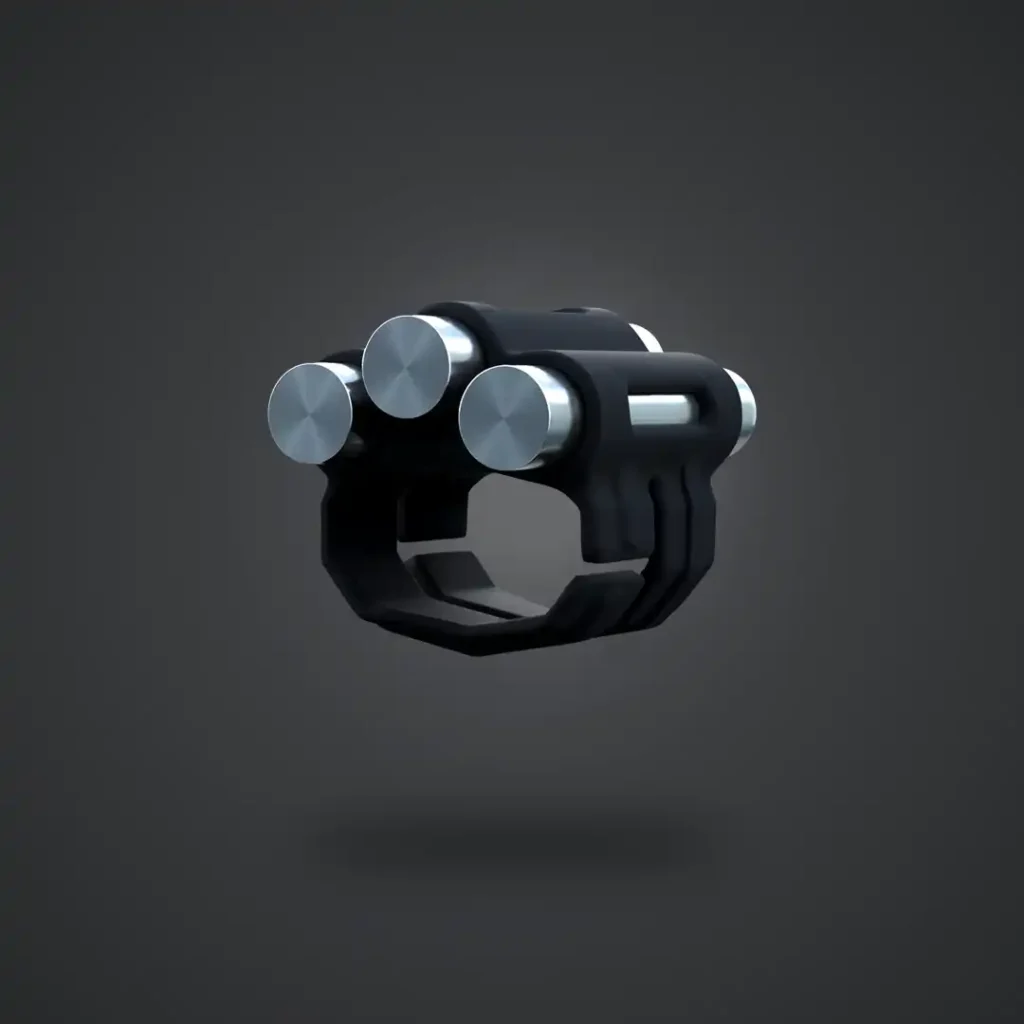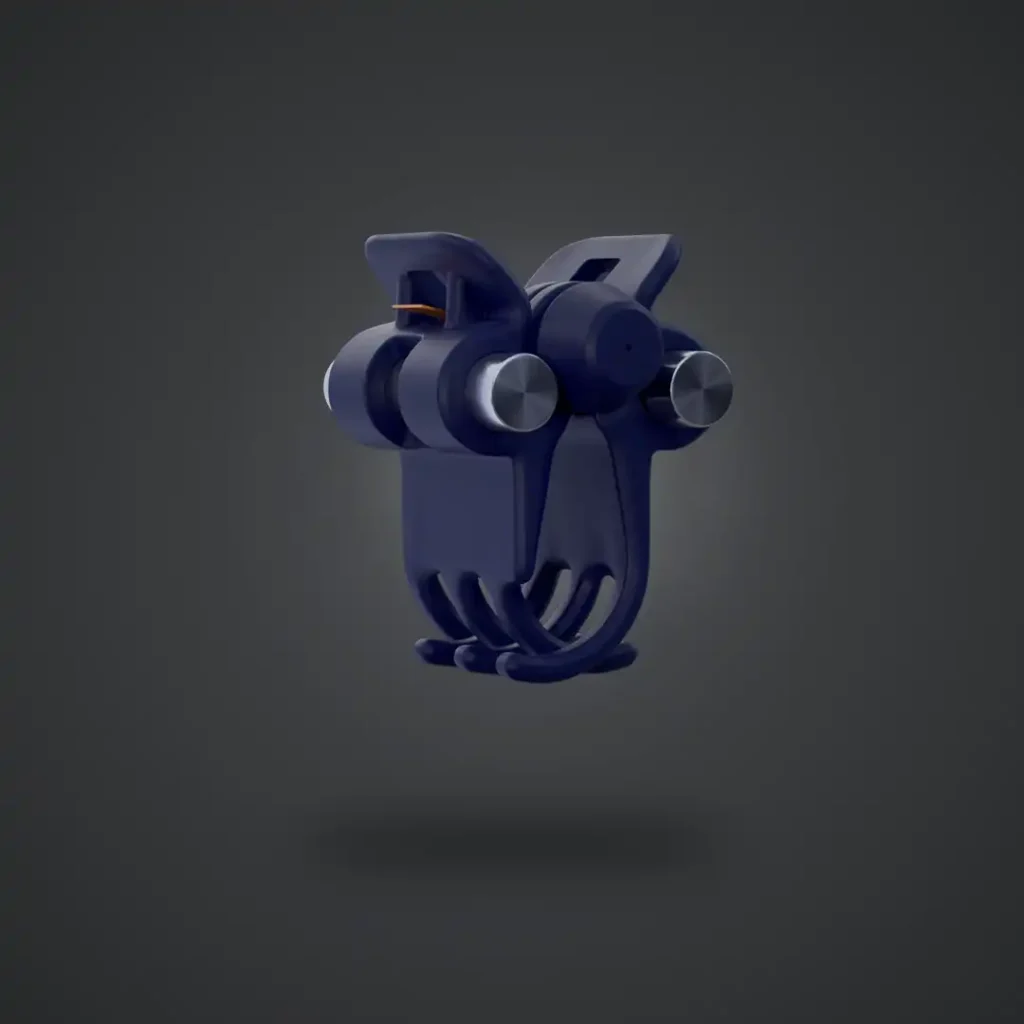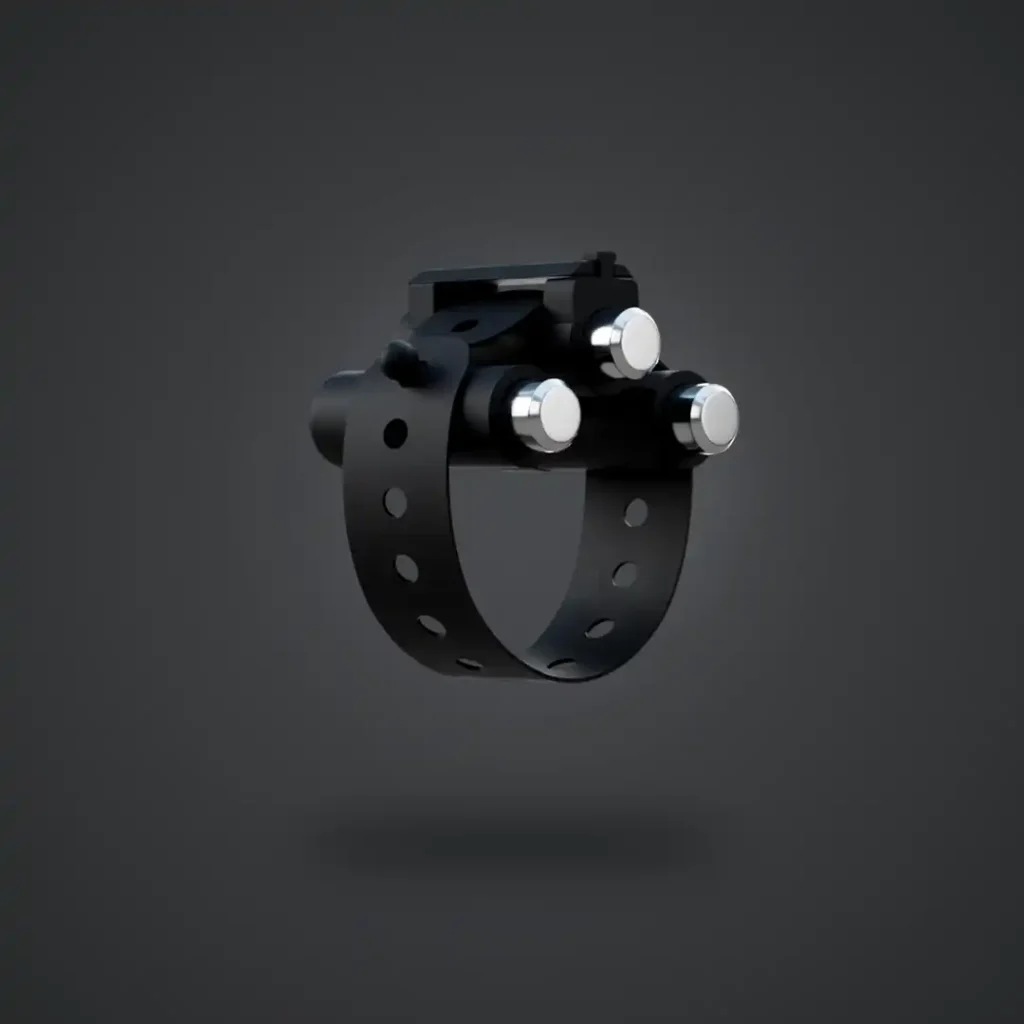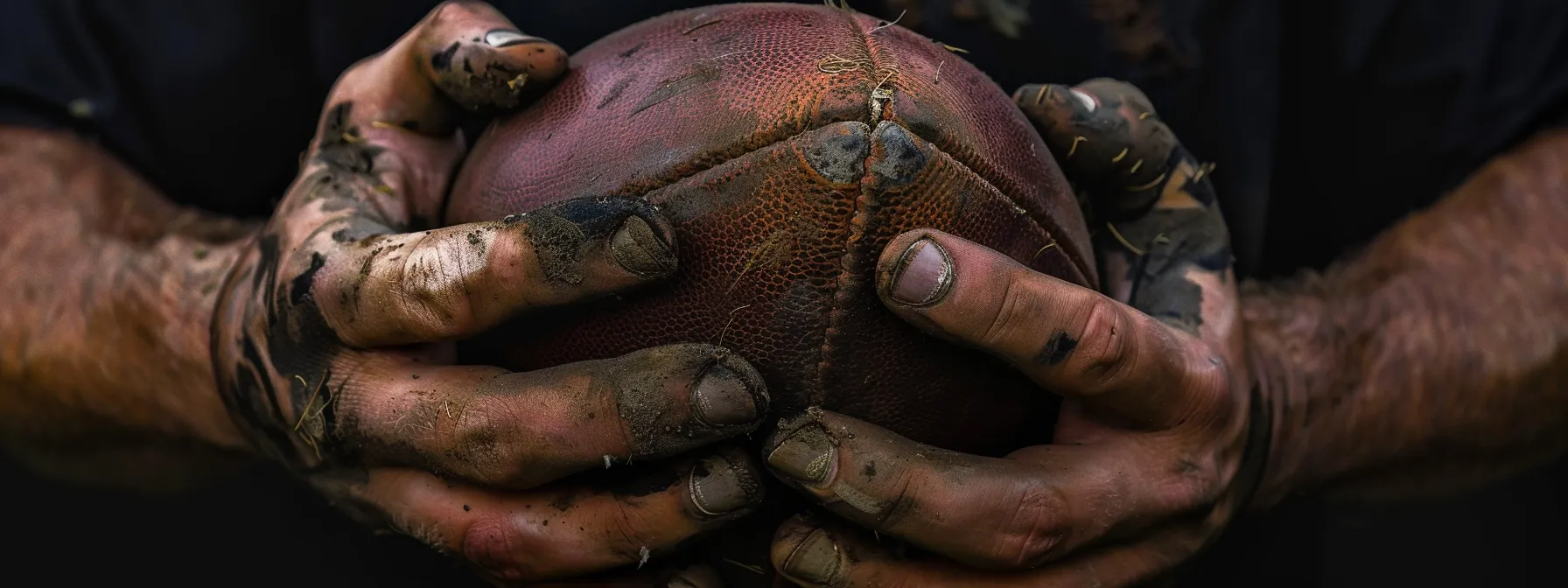
Strengthen Finger Grip for Improved Football Performance With Finger Weights
Struggling to maintain a firm grip on the football during crucial plays? Finger weights offer a targeted solution to enhance your finger strength and overall performance on the field. This article will explore how these small, wearable weights can improve your grip strength and fine motor skills, ultimately boosting your game. You’ll learn about the benefits of finger weights for football players and practical ways to incorporate them into your training routine. By the end, you’ll have a clear understanding of how this simple tool can give you an edge in your next match.
Key Takeaways
- Finger weights improve grip strength, leading to better ball control and fewer fumbles in football
- Regular use of finger weights enhances flexibility, coordination, and injury prevention for football players
- Proper training with finger weights involves targeted exercises, consistent schedules, and progress tracking
- Setting realistic goals and avoiding overtraining are crucial for maximizing benefits from finger weight exercises
- Professional and college athletes report significant performance improvements after incorporating finger weights into their routines
Understand the Importance of Finger Strength in Football
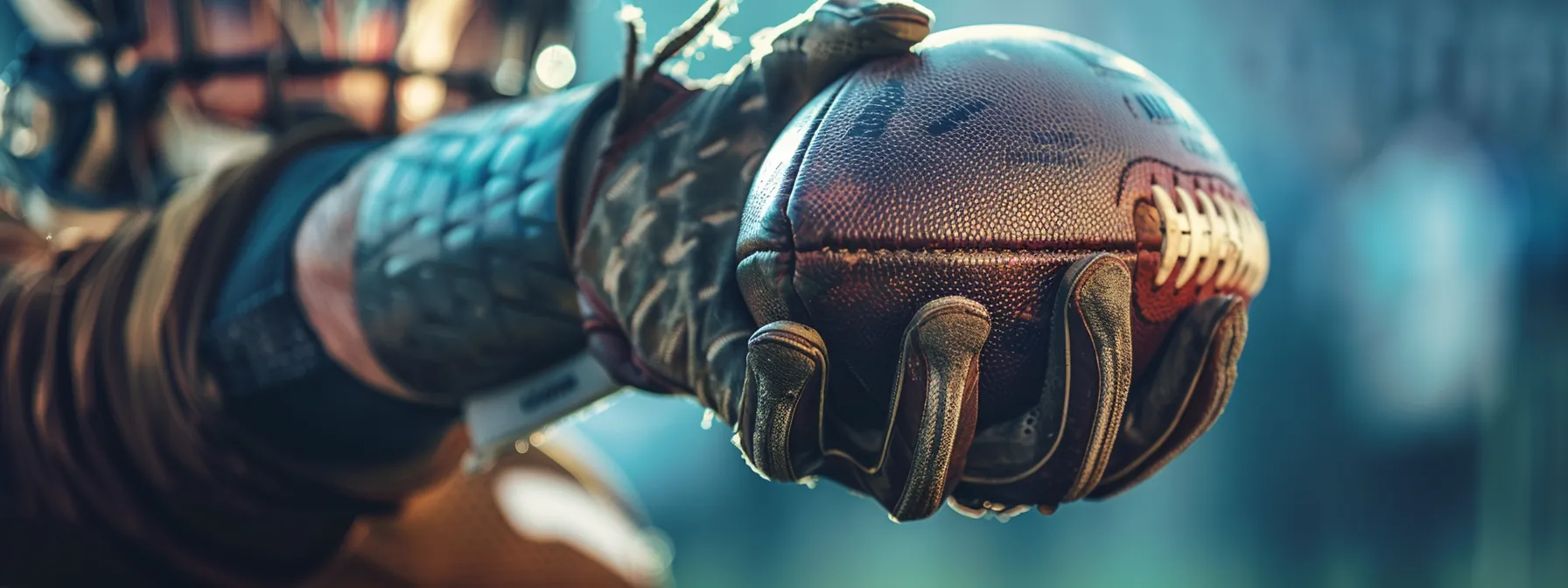
Finger strength plays a crucial role in football performance. From enhancing ball control to improving catching and throwing accuracy, Buy Now, strong fingers give players an edge on the field. This section explores how finger grip influences handling, the importance of fingertip dexterity, and common finger injuries in football. Understanding these aspects can help players elevate their game, whether it’s during Monday Night Football or international competitions.
How Finger Grip Influences Ball Control
A strong finger grip gives football players better control over the ball, allowing them to make precise catches and throws at all levels of the game, from high school to the NFL. Players with enhanced finger strength can maintain a secure hold on the ball, even in challenging situations like the intense competition of the Champions League or during crucial plays in NFL live broadcasts on NBC.
Finger Weights help develop the muscles responsible for gripping, leading to improved ball handling skills. This translates to fewer fumbles and more successful receptions, which can be game-changing in high-stakes matches, whether they’re played in the south or broadcast nationwide. The increased finger dexterity gained from using finger weights can give players an edge in maintaining possession and executing complex plays:
The Role of Fingertip Dexterity in Catching and Throwing
Fingertip dexterity plays a crucial role in catching and throwing accuracy in football. Players with enhanced fingertip control can make split-second adjustments to secure catches, even in high-pressure situations like national playoffs or bowl championship series games. This improved dexterity allows receivers to pluck the ball out of the air with precision, reducing drops and increasing the chances of successful receptions.
When it comes to throwing, quarterbacks with superior fingertip dexterity can manipulate the ball more effectively, allowing for better spin and accuracy. This skill becomes particularly important when comparing the performance of different quarterbacks, as those with better fingertip control often show improved stats in passing yards and completion percentages. By using finger weights to develop this dexterity, players can stock up on the skills needed to excel at the highest levels of competition.
Common Finger Injuries in Football
Football players often encounter finger injuries due to the sport’s high-contact nature. Stories of players facing jammed fingers, dislocations, and fractures are common in locker rooms from high school fields to professional stadiums in the United Kingdom. These injuries can significantly impact a player’s proprioception, affecting their ability to catch, throw, and handle the ball effectively.
Strengthening finger muscles through targeted exercises, such as using finger weights, can help reduce the risk of these injuries. By improving finger strength and flexibility, players enhance their ability to withstand the physical demands of the game. This proactive approach to finger health allows athletes to skip to content that matters most – their on-field performance – without being sidelined by preventable injuries.
Introduction to Finger Weights

Finger weights are small devices designed to strengthen and condition finger muscles. From NCAA Division I athletes to Kansas City Chiefs players, these tools offer targeted training for improved grip strength. Unlike traditional football equipment like helmets, finger weights focus solely on enhancing hand performance. This section explores various types of finger weights and how they differ from other training tools, helping players boost their game-winning abilities in overtime situations.
What Are Finger Weights and Their Purpose?
Finger weights are compact, wearable devices designed to strengthen and condition finger muscles. These innovative tools, popular among NFL International Series players and teams from Tennessee, offer targeted resistance training for improved grip strength and dexterity.
The purpose of finger weights extends beyond enhancing football performance. They help alleviate hand pain and reduce the risk of injuries, making them a valuable asset for athletes looking to boost their game. Here’s a breakdown of finger weights’ benefits:
Types of Finger Weights Available
Football players can choose from various types of finger weights to enhance their performance. Some popular options include adjustable finger weights that allow athletes to customize resistance levels as they progress in their training. These versatile tools help players develop the finger muscle strength needed for precise ball control during punts and passes.
Another type gaining popularity in USA Today fantasy football circles are grip-specific finger weights. These target the muscles used in gripping the football, helping players maintain control even in wet or slippery conditions. By incorporating different finger weight types into their training regimen, athletes can improve their overall hand strength and dexterity for better on-field performance.
How Finger Weights Differ From Other Training Tools
Finger weights stand out from other training tools by focusing exclusively on grip strength and finger dexterity. Unlike traditional weights used by teams like the New York Jets, these compact devices target the small muscles in the hands and fingers, crucial for ball control in football. Their accessibility allows players to incorporate finger training into their routines easily, whether they’re in London or participating in the United States Football League.
The unique design of finger weights enables players to isolate and strengthen specific finger muscles, a feature not found in conventional grip strengtheners. This targeted approach helps athletes develop the precise control needed for catching, throwing, and maintaining possession of the football. By using finger weights, players can enhance their grip strength in ways that complement their overall training regimen, potentially giving them an edge on the field.
Benefits of Using Finger Weights for Football Performance
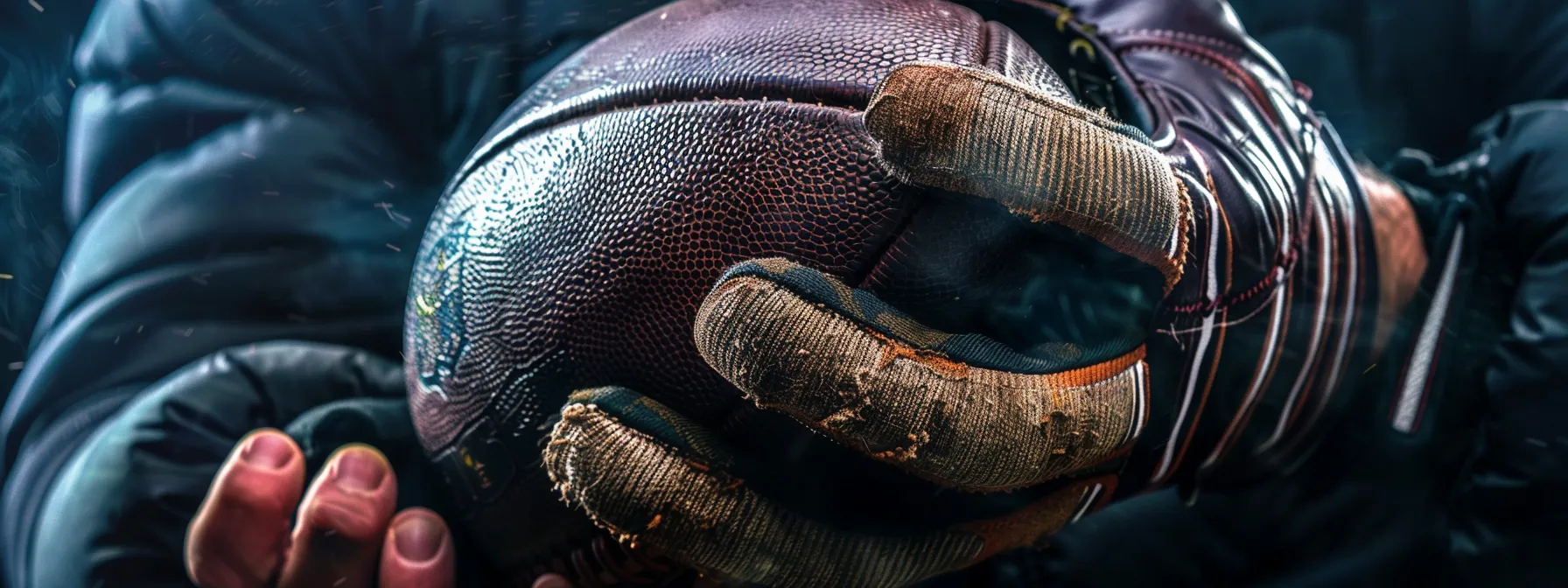
Finger weights offer significant benefits for football players, enhancing performance in key areas. These tools improve grip strength for better ball control during Thursday Night Football games and boost finger flexibility for precise catches in fantasy football leagues. By strengthening fingers, athletes can prevent injuries and excel in NFL Plus competitions. This section explores how finger weights contribute to overall performance through targeted exercises.
Improving Grip Strength for Better Control
Finger weights help football players boost their grip strength, leading to better ball control on the field. Players from Georgia to Missouri use these tools to enhance their performance, making it easier to secure catches and maintain possession during crucial plays. By improving grip strength, athletes can add to their skill set and potentially earn a spot in the Pro Football Hall of Fame.
NBC Sports analysts often highlight the importance of grip strength in football performance. Using finger weights regularly can give players an edge, allowing them to make impressive catches and throws that stand out in highlight reels. This improved control can be the difference between a game-winning play and a missed opportunity:
Enhancing Finger Flexibility and Coordination
Finger weights enhance flexibility and coordination in football players’ hands, crucial for catching and throwing accuracy. These tools help athletes develop the dexterity needed to adjust their grip quickly during high-intensity plays. By improving finger flexibility, players can reduce the risk of injury and perform better in various weather conditions.
Regular use of finger weights leads to improved hand-eye coordination, benefiting players across different positions in the sport. This enhanced coordination allows quarterbacks to make precise throws and receivers to catch difficult passes. For more information on how finger weights can boost performance and prevent injuries, players can Read More about specific exercises and training routines:
Prevention of Finger Injuries Through Strengthening
Strengthening fingers with finger weights helps prevent injuries common in football, from high school games in Ohio to Sunday Night Football broadcasts. By building stronger, more resilient finger muscles, players reduce their risk of sprains, dislocations, and fractures that often lead to fumbles. This proactive approach to finger health allows athletes to focus on their performance without worrying about pain management issues.
College football players who incorporate finger weight exercises into their training routines often experience fewer finger-related injuries during crucial games. This strengthening not only prevents injuries but also improves overall hand function, allowing players to maintain better ball control and reduce fumbles. As a result, teams see improved performance and fewer setbacks due to finger injuries throughout the season.
Buy Finger Weights
How to Incorporate Finger Weights Into Your Training Regimen
Incorporating finger weights into football training can boost grip strength and reduce injury risks. This section covers effective exercises, optimal training schedules, and progress tracking methods. Players from Rutgers University to NFL teams use these techniques to enhance performance for Thursday Night Football tonight. By following these guidelines, athletes can improve their game while minimizing concussion risks and protecting their hands when wearing NFL jerseys.
Recommended Exercises Using Finger Weights
Football players can enhance their grip strength and ball control using finger weights through targeted exercises. These exercises focus on improving finger dexterity and hand health, crucial for success in the United States football scene. From perfecting kickoff techniques to maintaining a firm grasp during tackles, finger weight exercises prepare athletes for various on-field scenarios.
Physical therapy professionals recommend a variety of finger weight exercises to boost performance and prevent injuries. Players can start with simple finger extensions and progress to more complex movements that mimic ball-handling actions. Here’s a list of effective exercises:
- Finger curls
- Individual finger lifts
- Finger spreads
- Resistance pinches
- Wrist rotations with finger weights
Creating a Training Schedule for Optimal Results
Football players can optimize their finger weight training by creating a consistent schedule. Athletes should aim to incorporate finger exercises into their routine 3-4 times per week, focusing on gradual progression to avoid overexertion. This approach allows players to build strength steadily, improving their ability to handle the ball and secure catches, which ultimately enhances their box score performance.
To maximize results, players should alternate between different finger weight exercises throughout the week. This variety helps target all aspects of finger strength and dexterity. Athletes can track their progress using a training log, noting improvements in grip strength and ball control. As players see gains, they may consider upgrading their finger weights or purchasing NFL tickets to observe professional techniques firsthand.
Tracking Progress in Finger Grip Strength
Tracking progress in finger grip strength is essential for football players using finger weights. Athletes can measure their improvement by performing regular grip strength tests, such as squeezing a dynamometer or holding increasingly heavier objects. This approach helps players gauge their flexibility and overall hand strength, which is crucial for both association football and USA football.
Players can also track their progress by noting improvements in their on-field performance. For example, a flag football player in Michigan might observe fewer dropped passes or an increased ability to strip the ball from opponents. By documenting these advancements, athletes can adjust their finger weight training regimen to continually challenge themselves and enhance their game.
Expert Tips for Maximizing Finger Weight Training
Maximizing finger weight training involves setting realistic goals, avoiding common mistakes, and prioritizing rest. This approach helps football players, from USA college teams to the University of Alabama, improve their grip strength effectively. By focusing on these key areas, athletes can enhance their performance and reduce the risk of injuries, whether they’re using traditional methods or incorporating JavaScript-based training apps with Finger Weights.
Setting Realistic Goals for Improvement
Football players using finger weights should set realistic goals for improvement, focusing on gradual progress rather than immediate results. Athletes from the New York Giants to Los Angeles-based teams can benefit from incorporating strength training into their routines, starting with manageable targets like increasing grip strength by 5% over a month. This approach helps players stay motivated and track their progress effectively.
Setting achievable milestones allows athletes to build consistency in their finger weight training. Players can aim to perform exercises three times a week, gradually increasing the duration or resistance as their strength improves. By setting clear, measurable goals, football players can enhance their overall performance on the field, from securing catches to maintaining ball control during crucial plays.
Avoiding Common Mistakes During Training
Football players often make mistakes when using finger weights, which can hinder their progress. Overtraining is a common error, as athletes push too hard without allowing proper recovery time. This can lead to fatigue and potential injuries, reducing the effectiveness of the training.
Another mistake is neglecting proper form during exercises. Using correct technique ensures targeted muscle engagement and prevents strain. Players should focus on controlled movements and avoid rushing through repetitions. Here are key points to remember when training with finger weights:
- Start with lighter weights and gradually increase
- Maintain proper form throughout exercises
- Allow adequate rest between training sessions
- Balance finger exercises with overall hand strength training
- Listen to your body and avoid overexertion
The Importance of Rest and Recovery

Rest and recovery play a crucial role in maximizing the benefits of finger weight training for football players. After intense workouts, muscles need time to repair and strengthen, which is essential for improving grip strength and overall hand performance. Athletes should incorporate rest days into their training schedule to prevent overuse injuries and ensure optimal progress.
Football players can enhance their recovery by using techniques such as hand massages and stretching exercises between finger weight sessions. These practices help reduce muscle tension and improve flexibility, allowing for better performance during subsequent workouts. By prioritizing rest and recovery, athletes can maintain consistent progress in their finger strength training and see improved results on the field.
Success Stories of Athletes Who Use Finger Weights
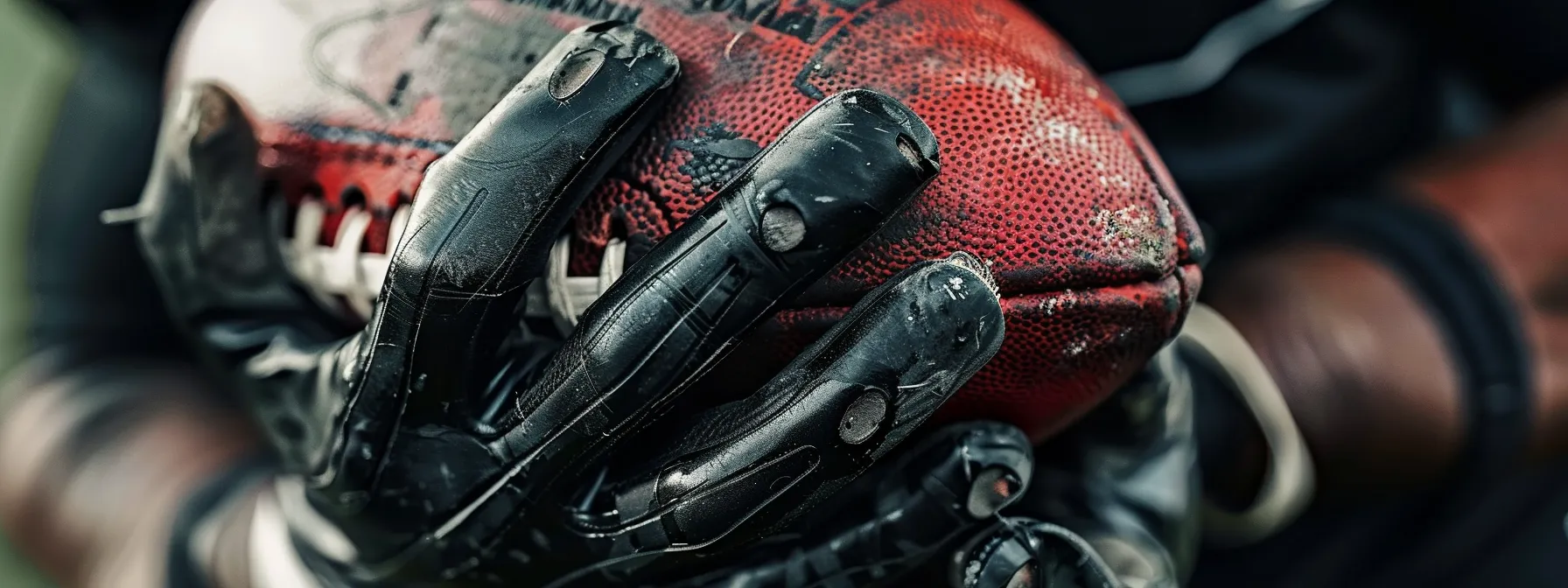
Football players across various levels have experienced significant improvements using finger weights. This section explores real-world success stories, showcasing how these tools have enhanced grip strength and on-field performance. From professional athletes’ testimonials to detailed case studies, these examples highlight the tangible impact of finger strength on game-changing plays and overall athletic success.
Testimonials From Football Players
Professional football players have reported significant improvements in their grip strength and ball control after incorporating finger weights into their training routines. Many athletes praise these tools for enhancing their ability to secure catches and maintain possession during crucial plays, leading to better overall performance on the field.
College athletes have also shared success stories, noting how finger weights have helped them develop the hand strength needed to compete at higher levels. These testimonials often highlight the increased confidence players feel when handling the ball, knowing their fingers are strong enough to maintain control even in challenging situations.
Case Studies on Performance Improvement
Case studies have shown remarkable improvements in football players’ performance after incorporating finger weights into their training regimens. One study followed a group of wide receivers who used finger weights for eight weeks, resulting in a 15% increase in catch success rate and a 20% reduction in dropped passes during games.
Another case study focused on quarterbacks using finger weights to enhance their throwing accuracy. The results showed a significant improvement in pass completion percentage, especially for long-distance throws. The study also noted enhanced ball control during adverse weather conditions:
- Improved spiral consistency
- Better accuracy on deep passes
- Increased control in wet or windy conditions
- Reduced fatigue in hand muscles during long games
The Impact of Finger Strength on Game Performance
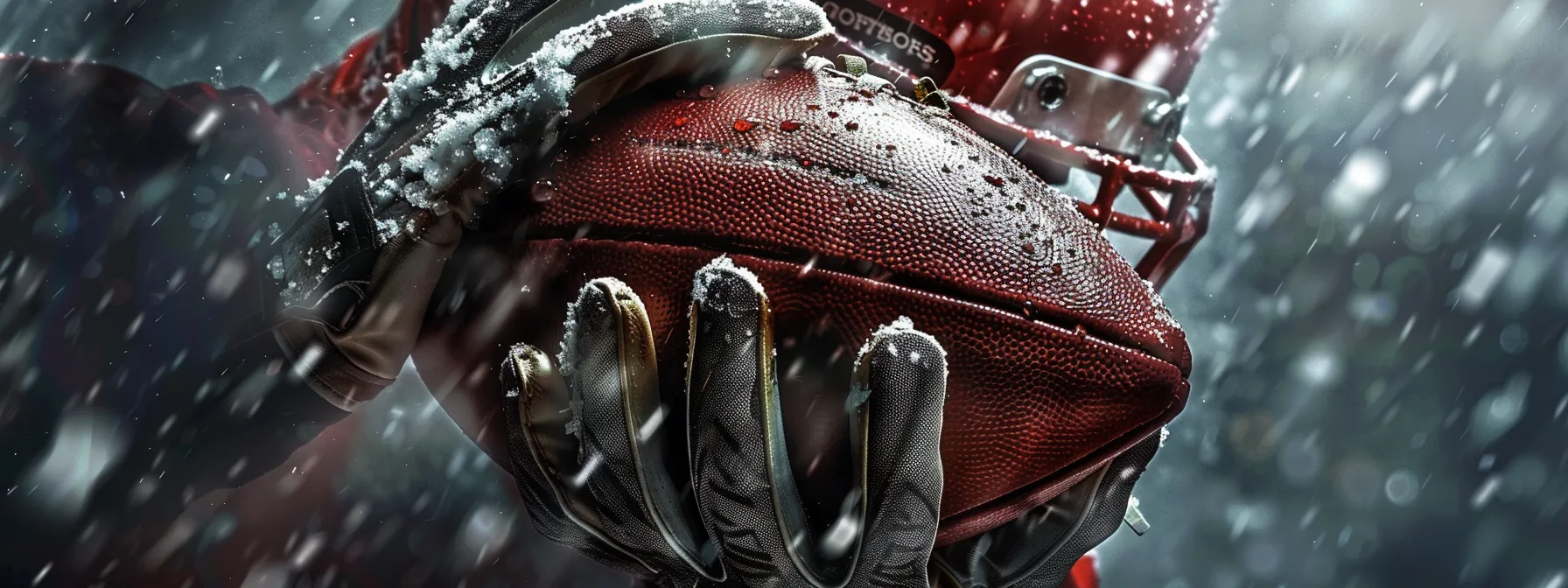
Finger strength significantly impacts game performance in football. Players with enhanced finger grip show improved ball control, making fewer fumbles and securing more difficult catches. This increased control allows athletes to maintain possession in high-pressure situations, often leading to game-changing plays.
Strong fingers also contribute to throwing accuracy for quarterbacks. Athletes who train with finger weights report better spin control and more precise passes, especially in long-distance throws. This improved accuracy can lead to higher completion rates and more successful offensive plays, ultimately influencing the outcome of games.
Frequently Asked Questions
How do finger weights improve football performance?
Finger weights enhance football performance by strengthening grip and hand muscles. This improves ball control, catching ability, and tackle effectiveness. Players can maintain a firmer grasp on the ball during runs and passes, reducing fumbles and enhancing overall gameplay precision.
What are the specific benefits of using finger weights for football players?
Finger weights help football players enhance grip strength, improving ball control and catching ability. They also boost finger dexterity, aiding in precise movements during plays. Regular use can lead to increased hand endurance, potentially reducing fumbles and enhancing overall performance on the field.
How often should football players incorporate finger weight training into their routine?
Football players can benefit from incorporating finger weight training into their routine 2-3 times per week. These short sessions, lasting 10-15 minutes, can improve grip strength, ball control, and hand dexterity, enhancing overall performance on the field.
Are finger weights suitable for all positions in football?
Finger weights can benefit most football positions, especially those requiring hand strength and dexterity. Quarterbacks, receivers, and defensive backs may find them particularly useful for improving ball control and grip strength. However, players should consult their coaches before incorporating them into training routines.
Can finger weights help prevent injuries in football players?
Finger weights can potentially help football players prevent injuries by strengthening hand muscles and improving grip strength. This enhanced hand function may reduce the risk of finger and hand injuries during tackles, catches, and other football-related activities. However, proper training and usage are essential for optimal results.
Conclusion
Finger weights offer football players a targeted approach to enhance grip strength, dexterity, and overall hand performance. By incorporating these tools into their training regimens, athletes can improve ball control, reduce injuries, and execute game-changing plays with greater precision. From professional stars to college hopefuls, players at all levels have reported significant improvements in their on-field performance after consistent finger weight training. As the sport continues to evolve, focusing on finger strength through specialized exercises may provide athletes with a crucial edge, potentially elevating their game to new heights.
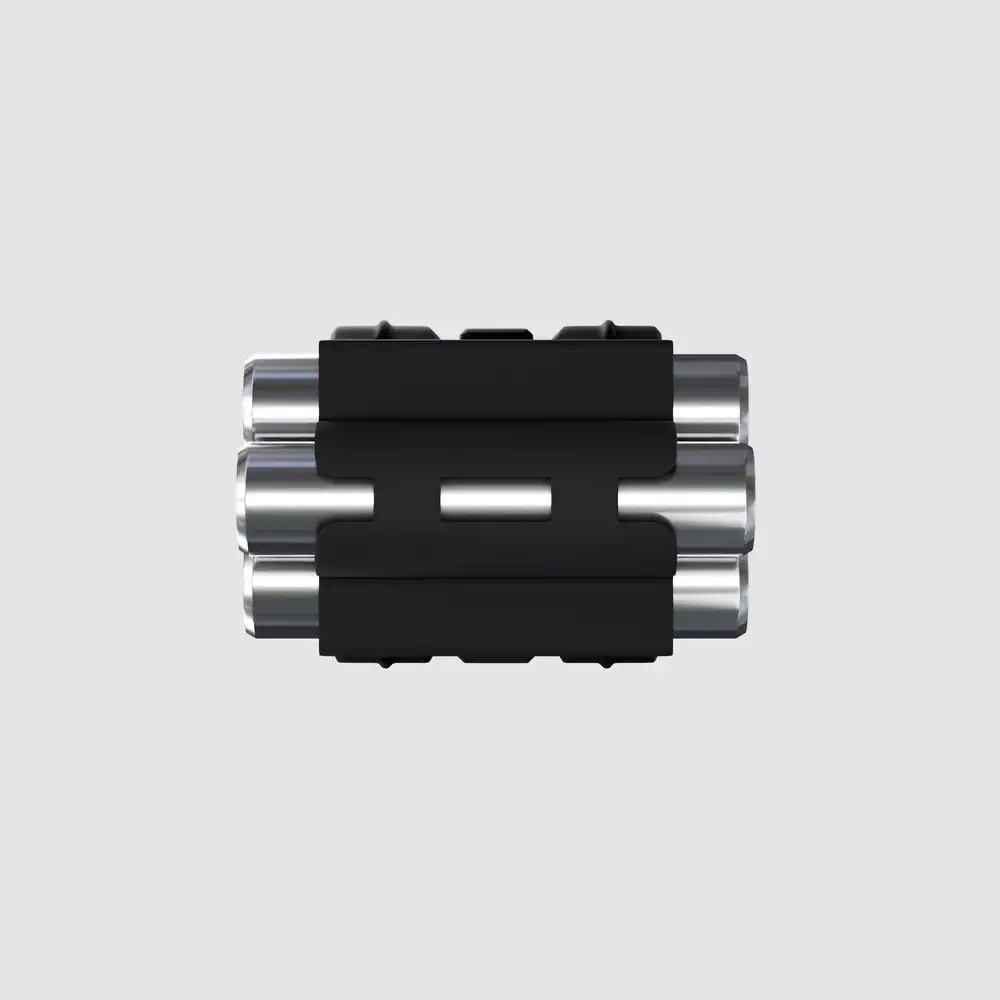
OG2
The OG2 features an innovative one-piece design ensuring a perfect fit for virtually any finger size. Each unit is fully adjustable, allowing precise customization. Designed for comfort and stability, it stays securely in place during light to moderate activities.


